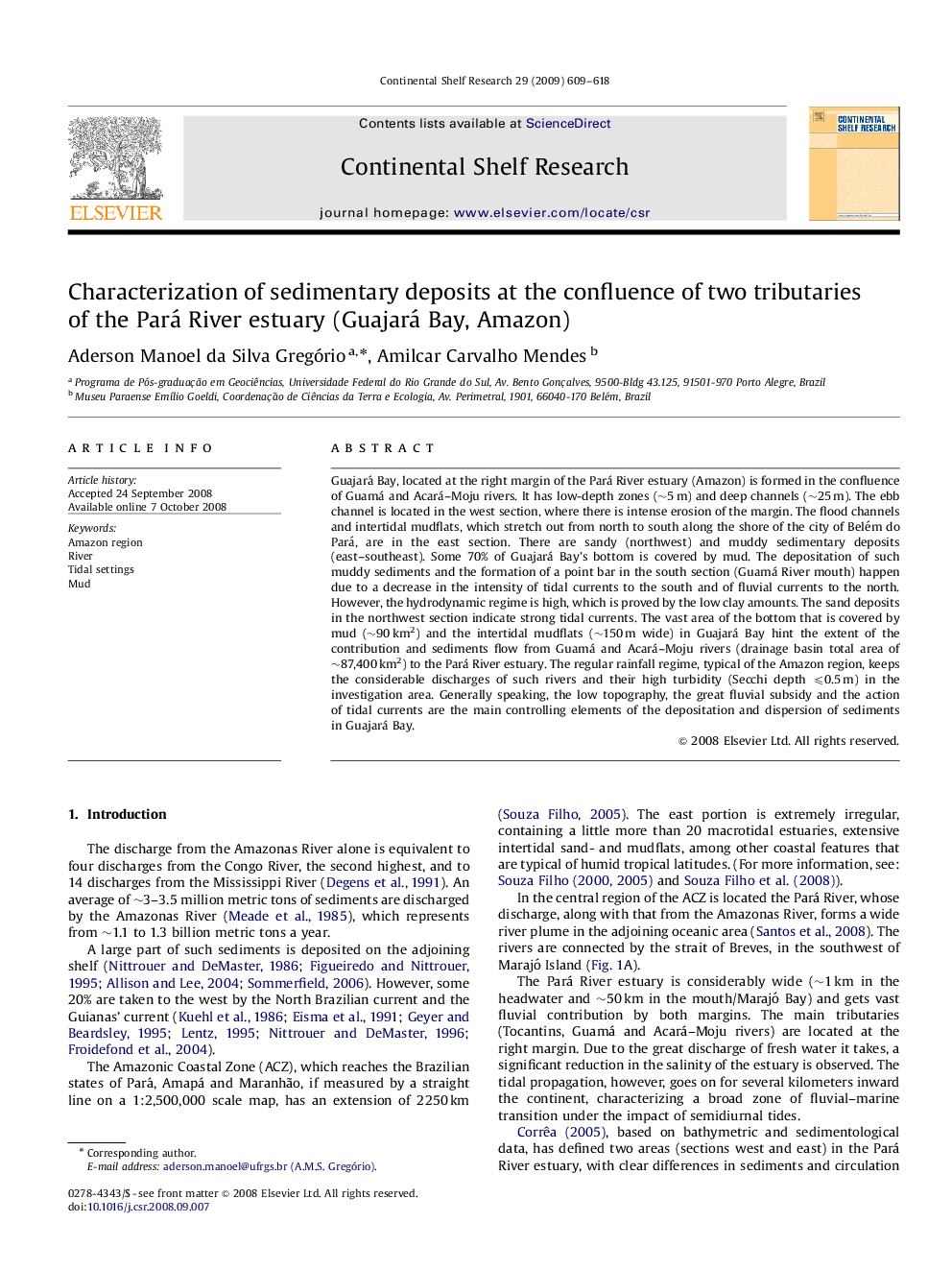| Article ID | Journal | Published Year | Pages | File Type |
|---|---|---|---|---|
| 4533113 | Continental Shelf Research | 2009 | 10 Pages |
Abstract
Guajará Bay, located at the right margin of the Pará River estuary (Amazon) is formed in the confluence of Guamá and Acará-Moju rivers. It has low-depth zones (â¼5 m) and deep channels (â¼25 m). The ebb channel is located in the west section, where there is intense erosion of the margin. The flood channels and intertidal mudflats, which stretch out from north to south along the shore of the city of Belém do Pará, are in the east section. There are sandy (northwest) and muddy sedimentary deposits (east-southeast). Some 70% of Guajará Bay's bottom is covered by mud. The depositation of such muddy sediments and the formation of a point bar in the south section (Guamá River mouth) happen due to a decrease in the intensity of tidal currents to the south and of fluvial currents to the north. However, the hydrodynamic regime is high, which is proved by the low clay amounts. The sand deposits in the northwest section indicate strong tidal currents. The vast area of the bottom that is covered by mud (â¼90 km2) and the intertidal mudflats (â¼150 m wide) in Guajará Bay hint the extent of the contribution and sediments flow from Guamá and Acará-Moju rivers (drainage basin total area of â¼87,400 km2) to the Pará River estuary. The regular rainfall regime, typical of the Amazon region, keeps the considerable discharges of such rivers and their high turbidity (Secchi depth ⩽0.5 m) in the investigation area. Generally speaking, the low topography, the great fluvial subsidy and the action of tidal currents are the main controlling elements of the depositation and dispersion of sediments in Guajará Bay.
Related Topics
Physical Sciences and Engineering
Earth and Planetary Sciences
Geology
Authors
Aderson Manoel da Silva Gregório, Amilcar Carvalho Mendes,
